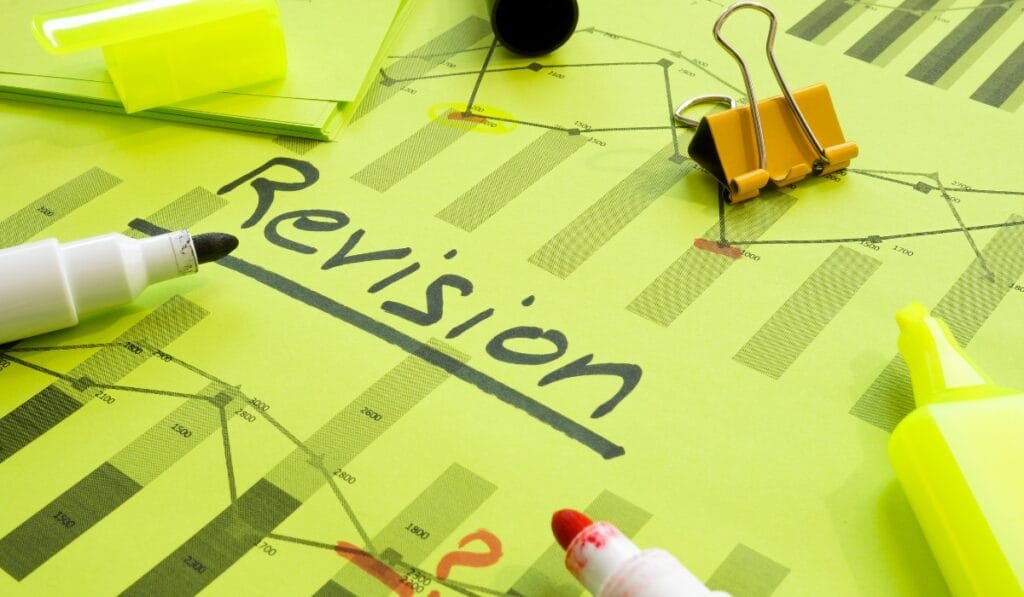Graphic design is a fascinating artistic field. However, just like every collaborative activity, it is not without its own revisions. The process of revisions is not limited to changing things; they’re a vital element of refining ideas, transforming concepts into polished images, and creating designs which genuinely resonate with the intended viewers. This post will provide answers to commonly asked questions on graphic revision designs, explain the reasons why it’s an integral element of creative processes and offer tips for how to manage it efficiently. You may be a designer who works with a design company such as Konsolve or is a designer on your own. This article can aid you in understanding the subtleties of design for graphic revision in a manner that is simple and straightforward to understand.

What Is Graphic Revision Design?
Graphic revision design is changes made to a design according to the feedback of clients or requirements for projects. Revisions may be as simple as tweaking colours, changing typography, altering layouts, or even introducing completely new components, all within the context of the initial concept.
It is important to distinguish between redesigns and change requests. The term “revision” refers to the fact that a revision is within the limits of the scope of work originally set out and focuses on the improvement of particular aspects. Change requests, on the other hand, are fundamental. Change demand: On the contrary, it represents fundamental differences and goes over the scope of the original brief, like adding completely new elements or changing the primary goal.
This distinction is essential to ensure easier communications between designers and clients and helps keep projects on schedule.
Tips: Always clarify the amount of revisions contained in the scope of work in the first agreement so that there are no confusions at a later date.
Why Are Design Revisions Important?
The revisions of design are not simply an additional step in the process; they can be a crucial element in improving the quality of a concept. Without the revision process, creating an impressive and polished final product can be quite challenging. There are three main motives for why revisions are essential.
1. Collaboration Leads to Better Results
Revisions give clients the opportunity to voice their opinions, making sure that the final layout is consistent with their ideas. This is a team effort in which designers listen to feedback from clients and combine it with their own professional experience.
2. Refinement for Perfection
Refinements are a chance to tweak every element of the design. It doesn’t matter if it’s changing the spacing of elements or adjusting colour gradients. Tiny tweaks can be crucial in creating a high-end result.
3. Improved Alignment to the Business Goals
Modifications let designers focus on designing visuals that fulfil particular goals, like creating brand awareness, enhancing customer experience, or increasing sales.
If both parties perceive revisions as essential and not difficult to complete–the odds of an effective final product increase by leaps and bounds.
How Do You Successfully Manage Graphic Revisions?
1. How Should Clients Approach Revisions?
To clients, giving specific, actionable feedback is essential in making revisions productive. Instead of using vague phrases such as “I don’t like it,” use specific feedback. Example:
- What are you not fond of and the reason.
- Make suggestions for changes that would better meet your needs (e.g., “I’d like more warm tones in the colour palette that evoke the feeling of .”).
- Use examples and references whenever you can.
Customers should set up an early feedback system. This could include assigning a person to handle all feedback. This will prevent confusion and double revisions.
2. What’s the Designer’s Role in This Process?
Designers need to be active in their listening and communicating during the entire revision process. Begin by clarifying feedback to make sure you understand client demands in a correct manner. If you are unsure of the direction to take, Ask questions such as “Could you clarify what you mean by “more dynamic”? Do you mean movement in contrast?”
Be sure to set limits! Make clear what’s considered to be a normal revision and what the request for a modification is that requires more costs or extra time.
Pro Tips: Tools like Figma, Canva, or Adobe Creative Cloud make it easy to work in real-time. Workspaces shared by clients allow users to visualize what they wish to alter, which helps reduce misunderstandings.
3. How Many Revisions Should Be Expected?
The most ideal scenario is in providing between 2 and 3 rounds of revising on most designs. This amount of time allows you to improve the design, without the risk of dragging out the project for a long time or overshooting the budget.
If your clients anticipate needing additional input, think about packages that allow unlimited revisions that are offered by agencies such as Konsolve, which offer a range of visual branding services that are tailored to your needs.
Common Misunderstandings About Revisions
Is Asking for Revisions a Sign of Poor Design?
No! Even the best design professionals create drafts which change over time. The revisions are a reflection of cooperation, not incompetence and help to achieve the highest quality result.
Do All Revisions Have to Be Implemented?
Not necessarily. Designers are often able to tell the best aesthetics as well as functionality. When a proposed revision could alter the outcome, the designer needs to offer alternate suggestions or justify why his current design is better.
Communication is essential. Discussions about the reasons behind why a certain feedbacks are used (or not) build trust between the client and designers.
How to Avoid Endless Revision Loops
Revisions are important, but there’s a problem with excessive revisions. In order to avoid being caught in a loop of endless repetition:
- Begin with a thorough outline of the design. The more detailed your design brief is, the less revisions will be required.
- Limit feedback contributors. A lot of voices could cause conflicting feedback, rendering revisions unproductive. Choose upfront who is responsible in approving design.
- Make use of deadlines in a responsible manner. Make clear timeframes for changes with room for final approvals to be made prior to the due dates for the project.
Agents such as Konsolve excel at managing workflows for revision, due to their organized timelines as well as open communication methods.
FAQs About Graphic Revision Design
What number of revisions can be part of a design project?
The majority of design software packages come with 2-3 rounds of changes. Make sure you confirm this in advance since additional changes could incur additional costs.
What happens if I require major modifications outside of the initial scope?
Every request that goes that is beyond the scope of work is considered as a change request. Talk about these modifications with your designer as they might require negotiation of time frames and cost.
Which tools are available to aid in the revision of graphic designs?
Software like Figma, Adobe Creative Cloud Tools like Figma, and Adobe Creative Cloud Canva can be great tools for collaboration. They allow customers to offer feedback directly on the layout.
How do I convey feedback efficiently?
Make it clear. Instead of simply saying, “I don’t like the font,” give the reasons the reason (e.g., “The font feels too modern for our traditional branding”).
Can revisions be part of my first cost?
Yes, however the amount of revisions will be determined by the terms of the contract. Review your contract to find out the specifics in order to avoid confusion.
Creating Value Through Graphic Revisions
Revisions to graphics aren’t just the result of an administrative task. They are the heart of designing designs that are valuable. If you’re a customer or a designer, learning the best way to handle revisions can lead to improved collaboration as well as better outcomes.
If you’re in search of experts who can guide you through a smooth design process take a look at Konsolve’s graphic design solutions. Their design team blends creativity and technical expertise, transforming the visual brand identity of your company to create something truly unique. Contact Konsolve now and put your visions into motion!






